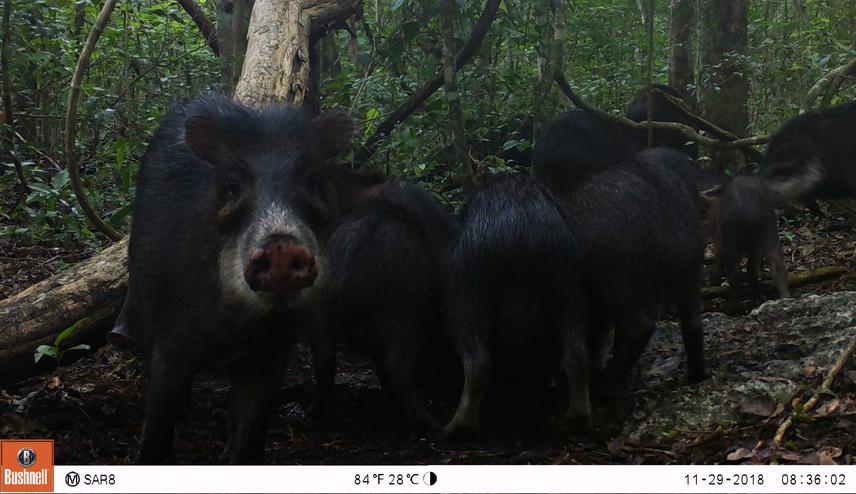Carlos Mauricio Delgado Martínez
Other projects
6 May 2021
Setting the Basis to Mitigate a Wildlife Climate Crisis: Analysing the Spatio-Temporal Variation of Water Availability for Birds and Mammals in Calakmul, Mexico
Water is a limiting key resource in tropical forests of the Yucatan Peninsula, Mexico. Wildlife ability to withstand this water shortage is assumed to primarily depend on ephemeral waterholes (aguadas). However, there are smaller water deposits (sartenejas), which likely provide a complementary key service to a diverse faunal ensemble yet, their ecological role remains mostly unexplored. I will evaluate the abundance and distribution pattern of sartenejas, their storage capacity, use by wildlife and impact by human activities over the course of a year in two different areas of the Calakmul Biosphere Reserve. My central goal is to assess the importance of sartenejas as a water source for the wildlife and humans, evaluate how their availability is affected by human activities and how this reflects on wildlife visitation. This project will generate key data to support wildlife populations, particularly in the face of anthropogenic threats such as climate change.

A white-lipped peccary herd (Tayassu pecari) drinking water in a sarteneja located in the Calakmul Biosphere Reserve, Campeche, Mexico.
The combined effects of climate change and human population growth are greatly affecting the availability of key resources such as water. Capacity to deal with the consequences of this phenomenon will define, in a large extent, the future of biodiversity and mankind. Even in tropical regions supporting lush vegetation water can exist in forms that are difficult to be accessed by wild fauna; thus, understanding water dynamics in tropical ecosystems is a key issue. This situation is clearly illustrated by tropical forests growing on leptosol soils in the Yucatan Peninsula, Mexico. In this region surface flowing rivers or extensive water bodies are missing yet it supports a very rich vertebrate fauna which includes populations of endangered species such as a jaguar, Baird’s tapir and white-lipped peccary.
Water availability can have a strong effect on vertebrate population abundance, movements, and distribution. The ability of the fauna in this region to withstand harsh environmental conditions, particularly during the dry season, has been assumed to largely depend on the existence of waterholes, locally known as “aguadas” which are naturally created by the accumulation of rainfall in swampy soils at topographic depressions lacking canopy cover. However, preliminary data suggests that smaller water deposits, locally known as “sartenejas”, might be playing a key role by complementing the service provided by waterholes or even playing unique functions to support the fauna. The sartenejas are constituted by water accumulated in small crevices opened in the rocky floor beneath canopy forest. Likely, due to its inconspicuous nature, in comparison with waterholes, information regarding the ecological relevance of sartenejas to, for example, help in animal’s body temperature control and in maintaining habitat connectivity remains mostly unexplored. This project will generate solid scientific data to fill this knowledge gap.
This study is aimed at furthering our ecological understanding of water use dynamics by wildlife in the Calakmul Region and how it might be affected by human activities. Moreover, by making these data accessible to stakeholders this project aims to impulse the designing of strategies to manage water resources and mitigate negative impacts over the wildlife and humans.